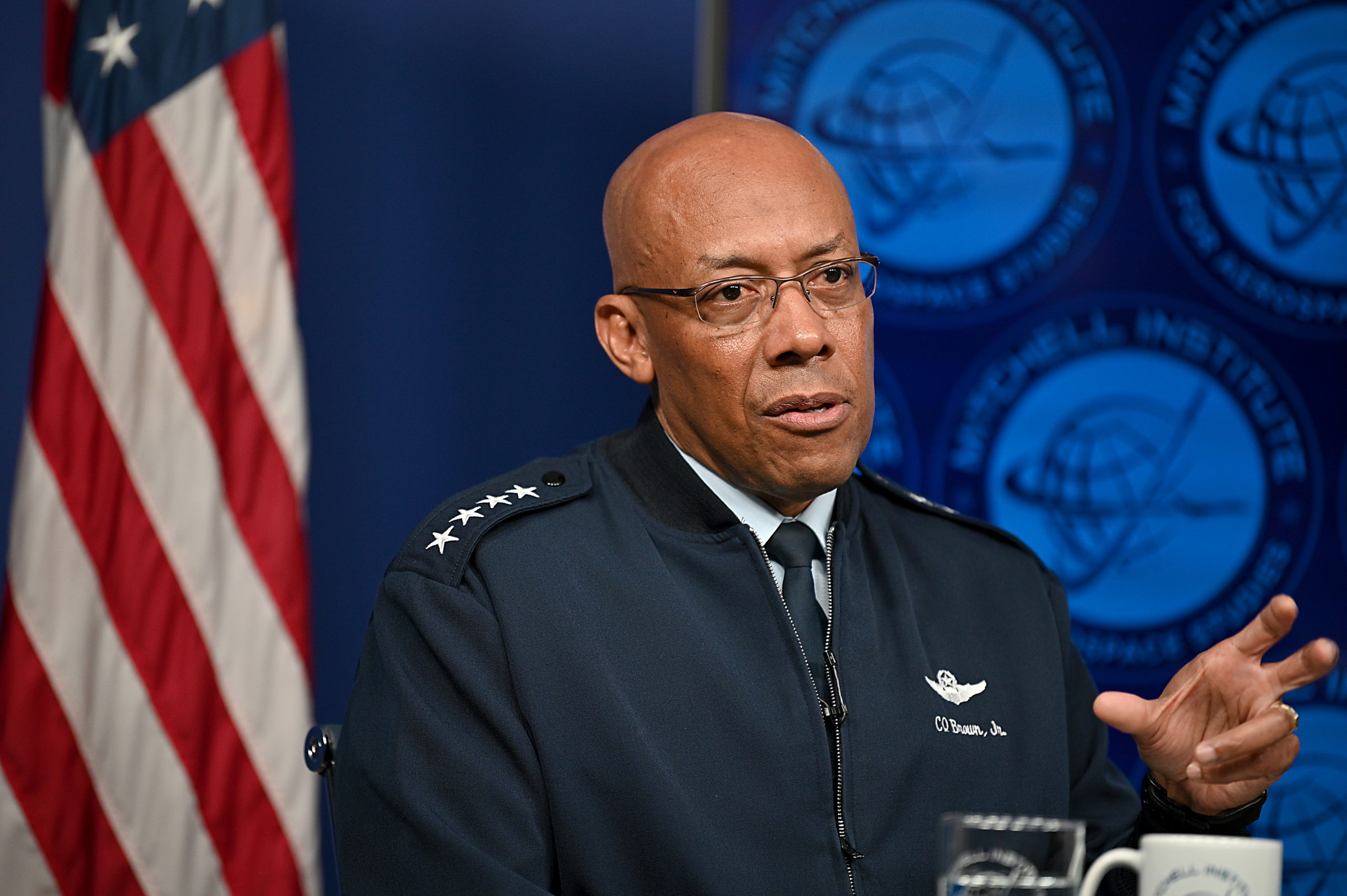As the Air Force struggles to ease its pilot shortage, it can still fill all its cockpits, Chief of Staff Gen. Charles Q. Brown Jr. said June 7. But that has come at the expense of staff jobs normally assigned to pilots, leading the service to reconsider whether those staff jobs actually need to be filled by rated officers, he said.
Speaking at a Mitchell Institute for Aerospace Studies event, Brown said the Air Force is looking “across the entire ecosystem” of recruiting, training, and retaining pilots to find ways to close the gap in flyers, which has hovered around 1,800-2,000 for the past eight years.
“What I’ll tell you is that we are 100 percent manned in the cockpit,” Brown said. “Where we take our cuts are on the staff. So, we’re probably 70 percent manned on the staff.”
Brown said deputy chief of staff for operations Lt. Gen. James C. Slife is leading a review of staff positions, looking at those that have become designated as pilot billets to see if they actually have to be filled by rated officers.
In some cases, the position may simply require “someone who has operational experience,” Brown said.
This scrub “won’t knock this shortage to zero,” but in the Air Force, “we probably always have more requirement than we have capacity to field,” and fixing the requirement can help fix the pilot shortage, he added.
Tied to that approach, Brown said he has tried over the last two years to “ensure that all of our Airmen, to the best of our ability, have a little operational acumen.” That will make it easier to fill staff jobs with non-rated officers, he said.
In the same vein, Brown said when a staff job does require a pilot, the service is reassessing whether that pilot needs to consume flying hours while working a desk job. Normally, “you still get to fly” to retain proficiency, but “some of those you need to do, and some of those have been nice to do,” Brown noted.
More broadly, the Air Force is taking a “diverse” approach to addressing the pilot shortfall, Brown said, and is emphasizing data-driven efforts.
One such effort is the aviation bonus, which just recently was increased to $50,000 per year. Another element is streamlining and quickening the pilot training process and ensuring those accepted for pilot training don’t have to wait years to report for duty.
Other approaches focus on offering more stability and support for pilots’ families, Brown said. As an example, he cited several first-tour instructor pilots at Laughlin Air Force Base, Texas. By the usual career playbook, they would progress to another base and a major weapons platform, but they asked to stay at Laughlin because their spouses had local jobs. Brown said making those kinds of accommodations should help.
In recent years, the Air Force has also pushed to attract a more diverse swath of pilots—broadening the population from which it can draw.
“We’ve got to look at how we break some of these paradigms that we’ve had in the past, and don’t don’t do a ‘one-size-fits-all’” approach anymore, Brown said. “Each one of those helps. You’re not going to get it to zero, but it will help.”
Brown also pointed out the whole of the military is struggling with a pilot shortage, as is the commercial airline and cargo industry, and noted he has been in talks with other flying organizations to best address what he called “a national problem.”
Recruiting overall is also a struggle, as Brown acknowledged the service is likely to not achieve its goals this year. And while retention rates are high, that can lead to an unbalanced force down the road.
Brown said he has urged his commanders to open up their bases, get people out in their communities, and increase the exposure of Airmen to the general public, because the people USAF wants to attract may not know there are careers available to them in the Air Force. They cannot aspire “to something they’ve never seen,” he said.
The competition for eligible youth is “keen,” Brown noted. “They get bombarded with information.”
To stand out, the Air Force has to make personal connections, he said—digital and social media contacts are fine, but there “has to be a person on the other end” ready to answer questions and talk to recruits.
Brown also said the Air Force will experiment with different career paths, particularly in the cyber area, wherein people could be recruited to do a job and not compelled to take a leadership path after a certain period of time. As with pilots, he also said USAF has to accelerate the timeline between getting someone to agree to serve and actually getting them into uniform. A prolonged wait increases the chances of that recruit taking up another opportunity, he said.
“We have to eliminate those ‘barriers to entry,’” Brown said. “People get tired of waiting.”

